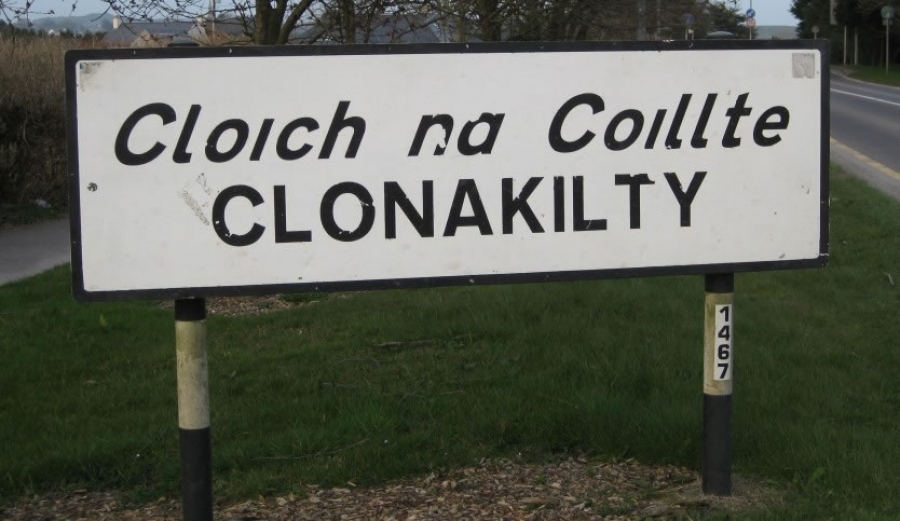
- Renewable Energy
- Posted
Energise Clonakilty
An ambitious new community initiative aims to run Clonakilty on 100% renewable energy — and with similar projects sprouting up across Ireland and Europe, it offers one local example of how our Energise Ireland campaign can achieve its primary goal: weaning Ireland off fossil fuels and on to green energy.
A group of activists in Clonakilty, west Cork want to convert the town’s energy supply to 100% renewables — and they want to do it in just nine years. The ambitious goal is outlined in a new study released by Sustainable Clonakilty, a local environmental group. If it comes to fruition, the plan — prepared by sustainable design consultants DW EcoCo — would see the town and its surrounding area powered and heated by a mix of biogas, energy crops, wind and solar power. The study found that the area boasts enough renewable energy resources to meet ten times its projected energy needs in 2020.
“The ambition is very high,” admits Xavier Dubuisson, the report’s main author, now of XD Consulting. It’s still early days, but the roadmap is gaining support from local politicians and businessmen.
It’s no surprise Clonakilty is trying to lead the way in green energy – it’s long been a pioneer in environmental and ethical issues. In 2003, it became Ireland’s first Fair Trade town, with local resident Jennifer Sleeman a driving force behind the campaign. A few years later, she organised local screenings of The End of Suburbia, a documentary about peak oil. “Someone said to me we have to do more, which was wonderful, it was music to my ears,” says Jennifer, now 81.
Sustainable Clonakilty was born soon after — the group meets every month and holds regular talks on green issues. “We started off at the height of the Celtic Tiger. “People had so much money that conservation or sustainability wasn’t a word on most peoples’ agenda,” says Cionnaith O’Suilleabháin, a Sinn Féin member of Clonakilty town council and founding member of the group.
Sustainable Clonakilty set up sub-groups campaigning on issues such as food, transport and energy — the latter decided to examine whether it was possible to deliver all of the district’s energy needs from local, renewable sources. “Our mission is to make Clonakilty energy neutral by the year 2020,” O’Suilleabháin says.
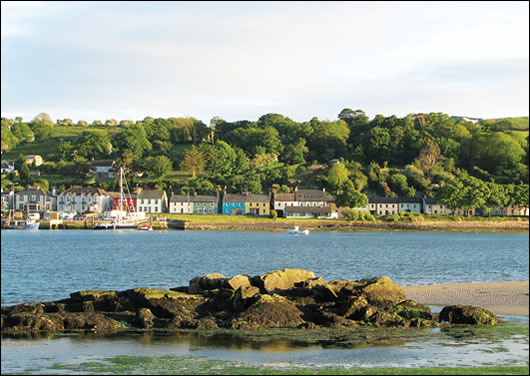
It’s envisaged that district heating could serve the villages of Timoleague and CourtMacSherry
With funding from the West Cork Development Partnership, the group commissioned the Clonakilty renewable energy roadmap. Dubuisson says the area will need to harvest a swathe of different energy sources to achieve its ambitious goal of being energy self sufficient by 2020.
First the roadmap looked at how Clonakilty is currently using its energy — half is used for heating buildings, with 30% used for transport and 20% for electricity. The town spends €23m a year on energy — but the vast bulk of this leaves the local economy.
So the study recommended the area reduce its energy use by 30% by 2020, principally by retrofitting local buildings to make them more energy efficient.
Then it looked at just how much renewable energy could be tapped in the area, and produced a figure of a whopping 1.6 TWh per year — over ten times what the town’s energy use should be in 2020 if it makes the recommended 30% cut.
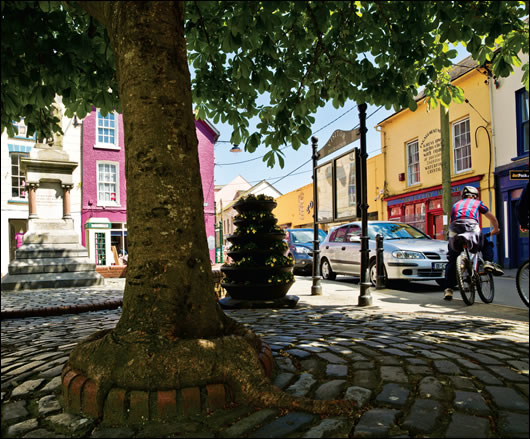
With a population of about 4,000, Clonakilty in west Cork has long been a pioneer in environmental and ethical issues, becoming Ireland's first fair trade town in 2003
But where will this come from? The plan envisages Clonakilty using wood from local forests and timber processing facilities to run combined heat and power plants. These would feed electricity into the national grid, and supply local district heating networks. Over time, fast-growing energy crops such as willow and miscanthus would replace timber fuels.
Critics of energy crops often point out that they drive food prices up by leaving less land to grow food, but Dubuisson says the roadmap doesn’t involve a big change in land use — perhaps about 5% of land in the area would need to be converted to energy crops. “Considering the area is exporting a major amount of food, maybe there’s margin for manoeuvre,” he says.
At the same time, local anaerobic digestion facilities would use organic waste and energy crops such as grass silage to produce biogas — this could fuel CHP plants or be used to run road vehicles. It could also be upgraded to biomethane and pumped into the gas grid, should it ever be extended to the area.
Other renewables would feature too: onshore wind would produce electricity (offshore might be too contentious, as it would need to be built close to land due to local sea conditions, and would thus be visually intrusive), while solar thermal systems would contribute to district heating. But tidal and wave energy were deemed unfeasible based on current technology.
“Wind energy will have to play a big part in the roadmap,” Dubuisson says. “This is a coastal area with good wind speeds and suitable grid infrastructure. The return on investment should be good. Managing a high level of wind penetration at a local level would be a challenge, but it is one where knowledge is evolving.” He stresses public support is crucial for the development of wind farms ― and this could prove tricky in a tourist hotspot.
Dubuisson envisages district heating networks piping heat around the main villages in the area — Timoleague, Courtmacsherry, and Rosscarberry. Clonakilty itself could get district heating too, but Dubuisson prefers another option here: extending the gas grid to Clonakilty and using it to distribute locally produced biogas around the town. He says this option is only feasible for Clonakilty, which is closest to the gas grid.
“It’s a versatile fuel that can be transported as a primary fuel as opposed to just heat,” Dubuisson says. He thinks farmers who supply biogas to the national grid should earn a feed-in tariff in the same way renewable electricity producers do now.
According to Dubuisson, implementing his roadmap would cost €108m, save 70 thousand tonnes of carbon a year while producing 167GWh of green energy, and create 363 full time jobs. He envisages a community energy service company (or ESCo) owning and operating the district energy networks and renewable energy plants. He also recommends setting up a local energy efficiency trust — an organisation that would oversee the retrofitting work needed to deliver a 30% cut in local energy use by 2020. Such an organisation — driven by local ownership — would provide independent advice, help organise financing of retrofitting and ensure workmanship is of a high quality. The energy efficiency trust concept has been promoted recently by leading sustainable design consultant Jay Stuart of DW EcoCo.
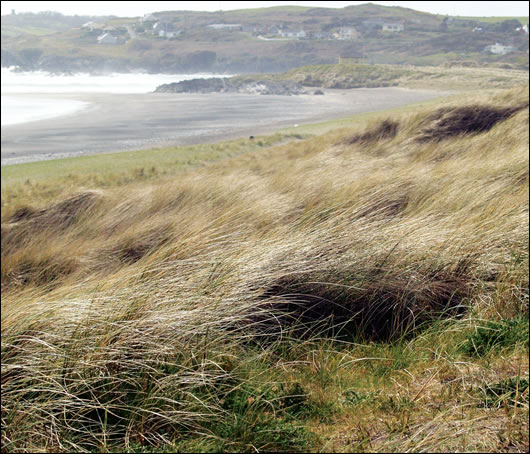
"Wind energy will have to play a big part in the roadmap. This is a coastal area with good wind speeds and suitable grid infrastructure," says Xavier Dubuisson. "Managing a high level of wind penetration would be a challenge, but it is one where knowledge is evolving."
“What I have in mind is a local utility,” Dubuisson says. “My vision really is for local resilience, and the local community coming together to deliver solutions for themselves.” He says local agricultural co-ops are a model to follow. “If it works for farmers, why not for energy producers or energy users?” he asks.
He cites the Cork-Swansea ferry as another inspiring example — the line closed in 2006 but was re-opened last year by a local co-operative. “It was such an important part of the local economy that people decided to get together and do it. For me that’s another example of people power.”
Other European towns have already shown the way forward — in 2008, members of Sustainable Clonakilty visited the Austrian town of Güssing, whose dramatic economic decline was reversed by a switch to green energy – as Richard Douthwaite wrote in the November 2006 issue of Construct Ireland. "We went out and saw what they had done and formulated a plan of attack, because we believed we could achieve something similar,” says Sustainable Clonakilty secretary Alison Wickham.
In 1988, Güssing spent €6.2m buying in energy— money that otherwise could have been kept in the local economy. So it aimed to slash its energy consumption by insulating buildings and installing more efficient street lighting — within two years its energy use was down 50%. Then, the local council decided to lay district heating pipes throughout the town, with heat produced by burning wood from the forests that cover 45% of the area.
But Güssing then went one step further: it started making a gas from timber and using it to generate electricity, and to make synthetic diesel to fuel road vehicles. The town is now entirely self-sufficient in electricity and heat. Over 60 companies have moved in since the switch to green energy, drawn by the low and steady price of energy and technical skills in the area.
Other areas have followed suit: the German town of Freiamt — population 4,300 — boasts four wind turbines, hundreds of rooftop solar thermal and PV systems, plus a handful of biogas plants and hydropower turbines. It now produces 17% more electricity than it uses, and as agriculture has declined the local boom in renewables has drawn tourists and kept money circulating locally.
Now Ireland is starting to catch on. Ballynagran, a rural community in east Wicklow, is aiming to become a “zero carbon community” by 2025 with the assistance of passive house advocate Tomás O’Leary. Plans are afoot to retrofit local houses, develop a community wind farm and u upgrade the local school to the passive house standard.
And on a much larger scale, Dundalk is aiming to achieve 20% renewable heating, 20% renewable electricity and a 40% improvement in the energy efficiency of selected buildings by 2020. Key buildings and social housing schemes in the town has already been retrofitted, an 850kW wind turbine has been installed at Dundalk IT, and a 30kW solar photovoltaic array has been fitted at a local school.
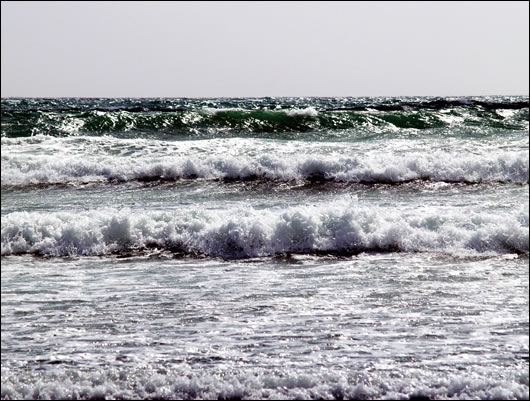
Harvesting wave energy was deemed unfeasible in the roadmap based on current technology
Dundalk was the first Irish town supported by SEAI’s Sustainable Energy Communities (SEC) programme — Clonakilty hopes to be the second. The programme supports communities that embrace energy efficiency and renewables. SEAI was set to announce a shortlist of potential SECs as Construct Ireland went to press, with Clonakilty in the running. If it ultimately wins, SEAI will offer it financial and logistical support for the next five years. Four new SECs will be selected between now and 2015.
Alex Grassick of Cork County Energy Agency oversaw Clonakilty’s application. “They’ve done a lot of work, they’ve been fairly active,” he says of Sustainable Clonakilty. “We feel our role is to foster them and give them the extra bit of help they need to get to the next level.”
Sustainable Clonakilty secretary Alison Wickham has seen the group blossom over the past five years. "It's been very gratifying seeing the group grow from a small handful of people to quite a vibrant organization now that's very inclusive. We have people from all walks of life," she says. "Things are never going to be achieved unless you take the first step. All we can do is do our best and try.”
In the ideal scenario outlined in the roadmap, Clonakilty would develop its energy systems like this over the next ten years: establish the energy efficiency trust (to drive retrofit work) and community ESCo, produce detailed feasibility studies and business plans for the district heating and renewable energy plants, rally public support for the roadmap, apply for funding from national and international sources, leverage private investment from banks, energy utilities and citizens, sell the idea of signing up to district heating to the local communities, keep supporting local renewable energy projects, start building district energy networks, push local uptake of electric and biogas vehicles, and keep expanding renewable energy, district heating and insulation programmes until energy neutrality is achieved.
But it’s obviously a mammoth task, and for now one of the big challenges is galvanising local support. The town’s bid for SEC status is supported by Clonakilty Agricultural College, West Cork Enterprise Board, Clonakilty Chamber of Commerce and the West Cork Development Partnership. But persuading the man on the street can be tough at a time when people are more concerned about their next mortgage payment.
Nonetheless, Councillor Cionnaith O’Suilleabháin is hopeful. “The price of petrol has gone up dramatically. People will start thinking about these things subconsciously,” he says.
O’Suillieabháin says emphasising the jobs that should result from the plan is one way of selling it — just as pointing out the economic benefits to farmers can bring them on board. He sees the renewable energy roadmap as one of Sustainable Clonakilty’s biggest achievements so far as a group. “It’s technical, it’s done by professional people,” he says. “We can actually use this to plan the future.”
Jennifer Sleeman – now honorary president of Sustainable Clonakilty — acknowledges that convincing locals to buy into a radical green energy plan can be challenge. “We find it difficult to get the general public. It’s almost as if things are changing so comparatively slowly, they don’t notice.”
She sounds a note of warning: “There’s no doubt that the climate is changing and I have no doubt oil will become so expensive we won’t be able to afford it,” she says. “We have to be ready.”

